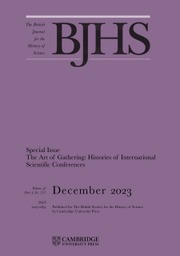Despite the ambitious title, which invokes several significant works in the field, including David Arnold's Science, Technology and Medicine in Colonial India (2000), Kamlesh Mohan's Science and Technology in Colonial India is more concisely focused on ‘some aspects of the socio-political history of science and technology’ (p. 1) through several case studies in colonial Punjab. This largely unchanged reprint of a 2014 edition published in India is part of an ongoing collaboration between Aakar Books (Delhi) and Routledge to release the former's publications to an international audience. The short book includes an introduction and four chapters, lightly edited from their original versions, which the author previously presented at different forums or published in various edited volumes and journals in the 1990s and early 2000s.
Chapter 1 uses the history of ethnography in India as a window into the role played by colonial science in the British imperial shift towards governing their colonies ‘not only politically but also epistemologically’ (p. 6) by hierarchizing and taxonomizing religion, language and caste in the mid- to late nineteenth century. Like much of the work on anthropology in India, the key figure referred to is Herbert Hope Risley, the ‘administrator-cum-ethnographer’ (p. 60) who embodied the consolidation of science and colonial rule. Whereas Chapter 1 articulates the motivation behind colonial science, the following two chapters engage more specifically with sites of scientific and technological indigenization and resistance in colonial Punjab, the university (Chapter 2) and the printing press (Chapter 3), followed by a fascinating biography of an under-studied but key nationalist figure in Indian and Punjabi science, Ruchi Ram Sahni (1863–1948) (Chapter 4). All three chapters highlight the tension between the diffusion of Western knowledge and practices in colonial Punjab by Indian scientists, often supported (and trained) by the colonial power, and the nationalist anti-colonial project that sought to both co-opt and refashion imperial science.
One challenge for the reader is that the book, taken as a whole, lacks a coherent narrative. This is partly a consequence of assembling separate papers by the author, with few changes, into a book. Although the introduction attempts to ground the book in a conceptual exploration of colonial science and technology, the reader is left to identify the threads that link the different case studies. The first identifiable thread is geography. The book is largely focused on colonial Punjab as a site of study; however, it invites the reader to extrapolate from the region to understand much wider sociopolitical directions in science and technology in India. While a common, but not always ideal, approach to research on colonial India, the evidence and arguments set out in the more Punjab-oriented chapters (2 and 3 especially) are situated in a broader colonial context. Whether this translates to other areas is not always clear. The second is biographical, with a plethora of key figures who played a significant role in the history and development of science and technology in colonial Punjab introduced across the book. Some key figures, notably the physicist Ruchi Ram Sahni, appear in two or more of the chapters. The third is epistemic, showing an overarching concern with the accommodation of, and tensions in, the ‘vernacularization’ – for want of a better word – of ‘hegemonic’ (pp. 34–40) modern (and Western) scientific practices by nationalist and increasingly anti-colonial scientists such as Sahni, who had to ‘negotiate between pulls and pressures … to modernise their society through the instrumentality of Western scientific knowledge and the patriotic compulsion to fight for Indian cultural tradition and national freedom’ (p. 150). The narrative is also hindered by the glaring lack of a separate conclusion, a missed opportunity to bring together the different chapters and tie the threads into a cohesive argument.
More of an issue, however, is that the papers turned into chapters have not been extensively updated since they were published. Chapter 1 on colonial ethnography, for example, was presented at a conference in 1993 and the chapter reflects this, with its most recent reference being from 1991, taking no account of a large body of subsequent research into the histories of colonial anthropology (such as Chris Fuller's work on Risley). The lack of updates since Aakar first published it can perhaps be forgiven; however, the book comes across as somewhat dated for 2014, let alone 2023. The discussion of colonial scientific ‘hegemony’ in the presumably last-to-be-written introduction feels outdated, given more recent nuanced analyses of the uncertainties and limits underlying colonial science that manifested in doubts about scientific progress and, more broadly, colonial rule in India. There are also issues with the copyediting process, including several typos (such as on pp. 8, 150).
That said, Science and Technology in Colonial India does have its merits and scholars focused on regional histories of science in India, not just colonial Punjab, will find that the book has very useful insights into the emergence and development of science as a discipline and practice at Indian universities and in print, and presents an alternative approach to writing a biographical history of science and Indian nationalism.



